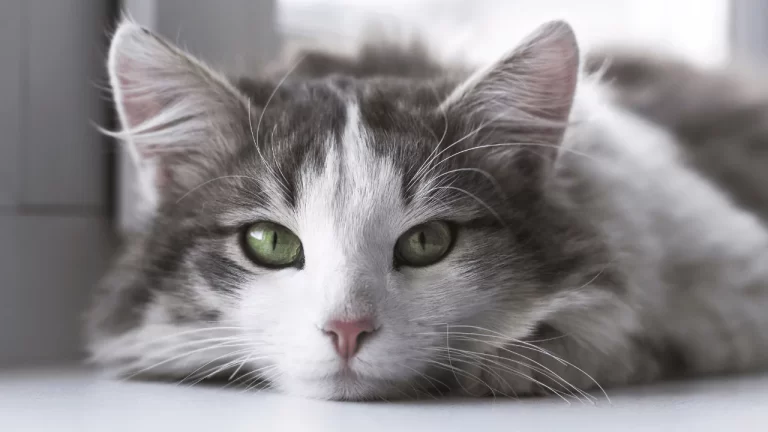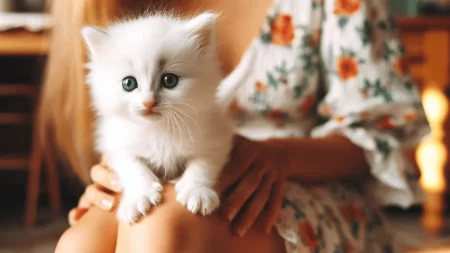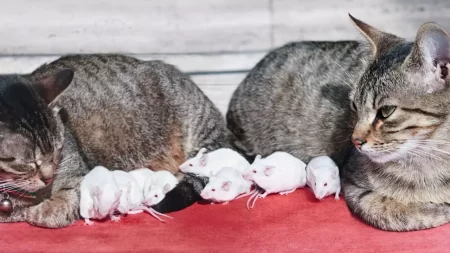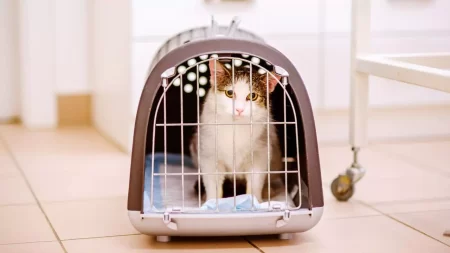Yes, cats can see color, but not as vividly as humans. Cats have a more limited range of color perception due to differences in their retina compared to the human eye.
While cats may not see colors as brightly as we do, they are capable of distinguishing some shades, and their vision is well-adapted for their needs as a predator and night hunter.
How Does a Cat’s Vision Compare to Human Vision?
There are a few key differences between cat vision and human vision:
Cats perceive a more limited range of colors
Unlike humans who have trichromatic vision and can see the full spectrum of colors, cats are believed to have dichromatic vision. This means they can only perceive shades of two primary colors – blue and green.
Their eyes contain two types of light receptors called cones that are sensitive to different wavelengths of light. Humans have three cone types that respond to red, green, and blue light. With fewer cones, cats cannot distinguish as many colors.
Cats have better night vision
Cats perceive better in low light than humans. The tapetum lucidum behind their retina reflects light back through the retina, boosting low-light vision. This provides cats six times greater night vision than humans.
Cats have a wider field of view
Cats have excellent peripheral vision with a field of view around 200 degrees. This gives them a wider range of vision for spotting prey and potential threats. In comparison, the human field of view is approximately 180 degrees.
What Colors Can Cats See?
While not able to see the full spectrum, cats can perceive some colors:
Cats can see shades of blue and green
Experiments have shown that cats can distinguish between blues and greens. This is likely because they have two different cone photoreceptors that are sensitive to medium (green) and short (blue) wavelengths.
Cats have difficulty distinguishing red, orange, and brown
Without cones that can detect long wavelengths of light, cats struggle to differentiate shades of red from orange or brown. These colors would appear more grey or neutral to a cat.
How a Cat’s Color Vision Affects Their Behavior?
A cat’s more limited color perception doesn’t impact them too significantly in their daily lives. Here are some ways color may play a role in cat behavior and senses:
Cats focus more on movement than color
Since cats hunt small, fast-moving prey like rodents, their vision is adapted to prioritize detecting motion. The ability to see color is less crucial for cats to catch prey or avoid predators. Brightly colored birds or fish may not immediately grab a cat’s attention unless they are moving.
Color may still play a role in certain behaviors
Research suggests color vision may be important for some social interactions in cats. For example, they seem to use color to identify other cats and can discern their own kittens from others based on coat color. Colors might also help cats find edible plants and detect when fruits are ripe.
In summary, cats do have color vision, but they see the world very differently from humans. While not able to perceive the full spectrum, cats can differentiate some hues including blues and greens. If you’d like to learn more interesting facts about cats, you can check out this article on facts about cats.
However, movement and brightness differences likely stand out more to cats when hunting. So while cats may not admire colorful sunsets or paintings as we do, their unique vision is ideal for their needs as feline predators.







